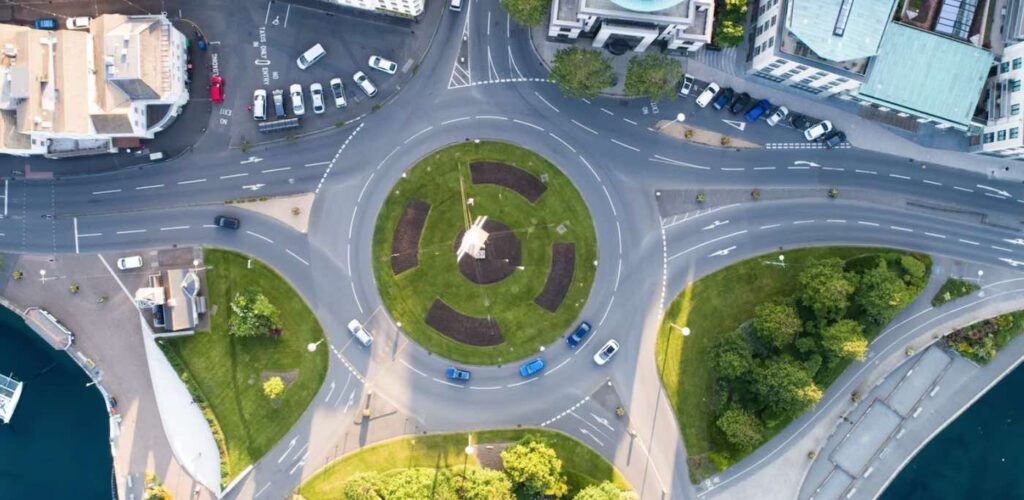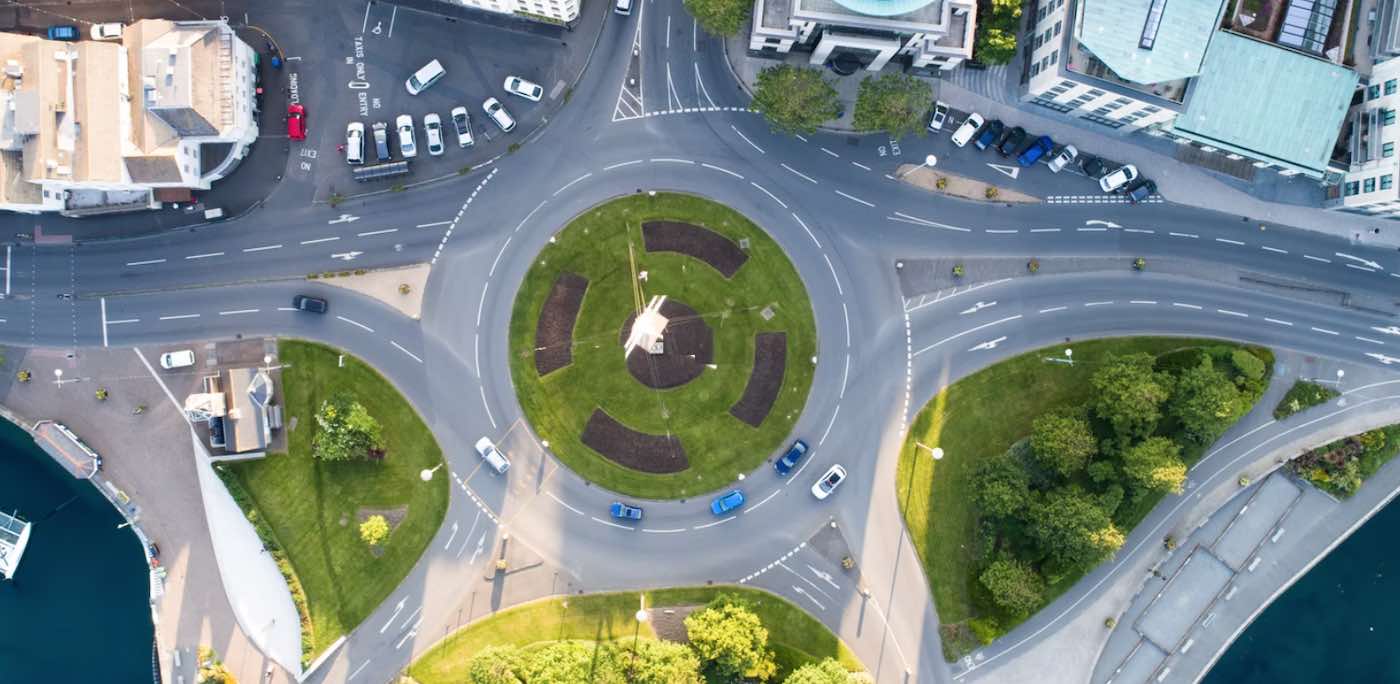Why do Americans still construct traffic intersections that make cars sit idle for minutes at a time, while spewing emissions, at red lights? Well, not all U.S. states are stuck in the past.
In the state of Indiana, 256 roundabouts (also called traffic circles) have been constructed since 2016, and the data is showing what Europeans have known for decades: they definitely reduce collisions, fatalities, traffic congestion, and fuel consumption.
Not only that, roundabouts cut pollution, while reducing construction and maintenance costs.
Due to the fact that the only type of maneuver inside a roundabout is a right turn, they are safer—the intentions are quite obvious what even reckless and unpredictable drivers are trying to do. Furthermore, because entering the circle requires drivers to yield to others in the roundabout, there’s a certain amount of attentiveness that all drivers must give, which will naturally provide more safety in a state that saw 700 people die every year from running red lights, or being hit by someone running a red light.
If you miss your exit in a circle, you simply continue to circulate as normal until you arrive once again at the correct exit.
For all these reasons and more, Indiana has seen reductions of 90% in intersection fatalities when they are replaced with traffic circles, and a 76% reduction in crashes resulting in injuries.

Wisconsin too, has seen a “significant number” of fatalities disappear after the construction of the nearly 500 traffic circles that exist on the Badger State’s road network. Wisconsin has the most roundabouts of any U.S. state, with Indiana and Washington behind it.
“Overall (in roundabouts), we see fatalities and serious injuries almost go down to nothing,” Andrea Bill, a traffic safety engineer and researcher at the University of Wisconsin’s Traffic Operations and Safety Laboratory told the Milwaukee Sentinel.
The service life of a traffic circle is about 25 years, compared to 10 years on the lights of an intersection. The lack of lights also saves around $5,000 a year in energy costs, and traffic quantity can be augmented by 30-50% without creating additional congestion.
POPULAR: Airless Tires: These Puncture-Proof Michelin Marvels Are Even Made From 47% Recycled Resources
Yep, the evidence is pretty unavoidable at this point. Constructing an intersection regulated by lights would be like building a new line of Fords with engines from the 1980s; it’s just deliberately going backwards.
Let’s hope more states circle around to these impressive statistics and make changes that can cut down on accidents, pollution, and costs.
DRIVE These Interesting Facts to Friends Waiting to Accelerate on Social Media…





















I am glad they save money and lives and lowering carbon emissions. Once you get used to roundabouts, they are not difficult.